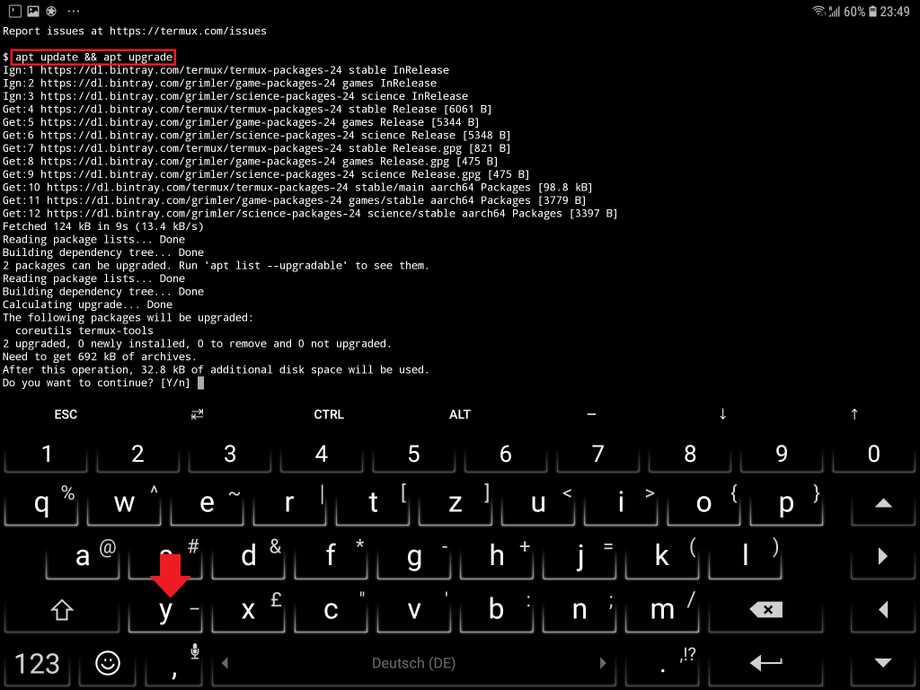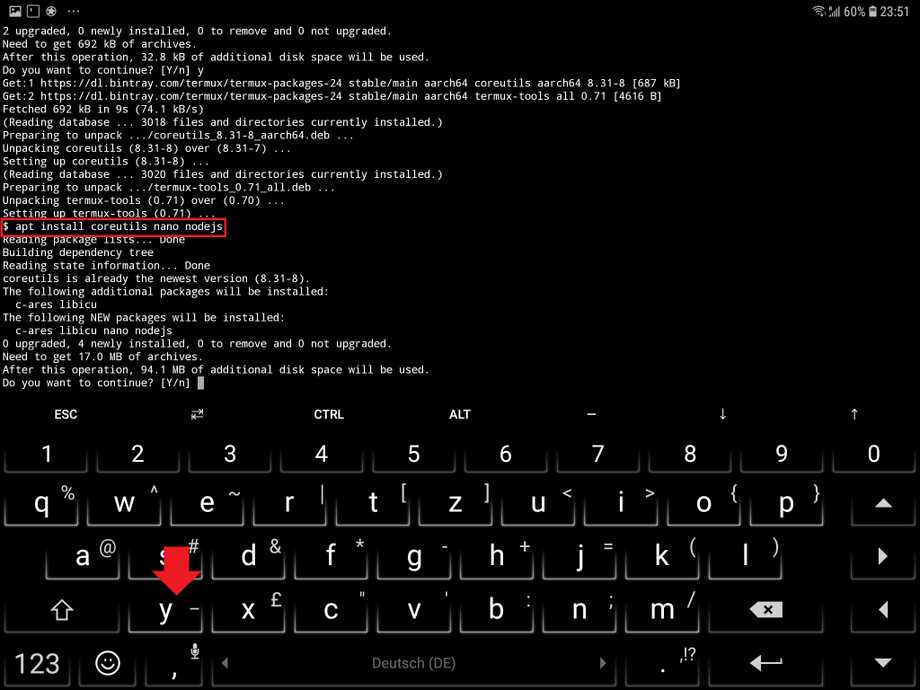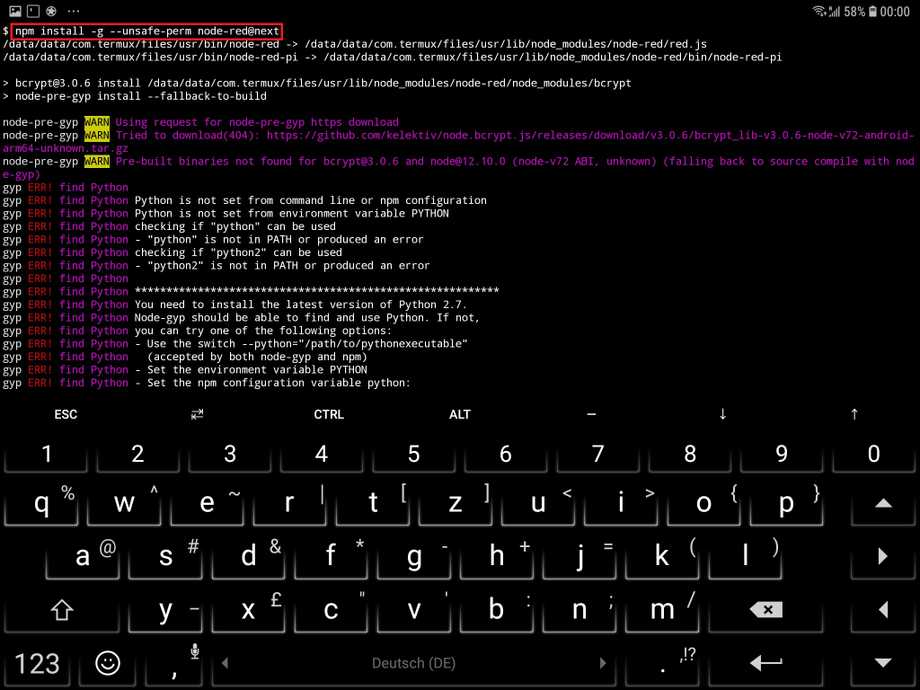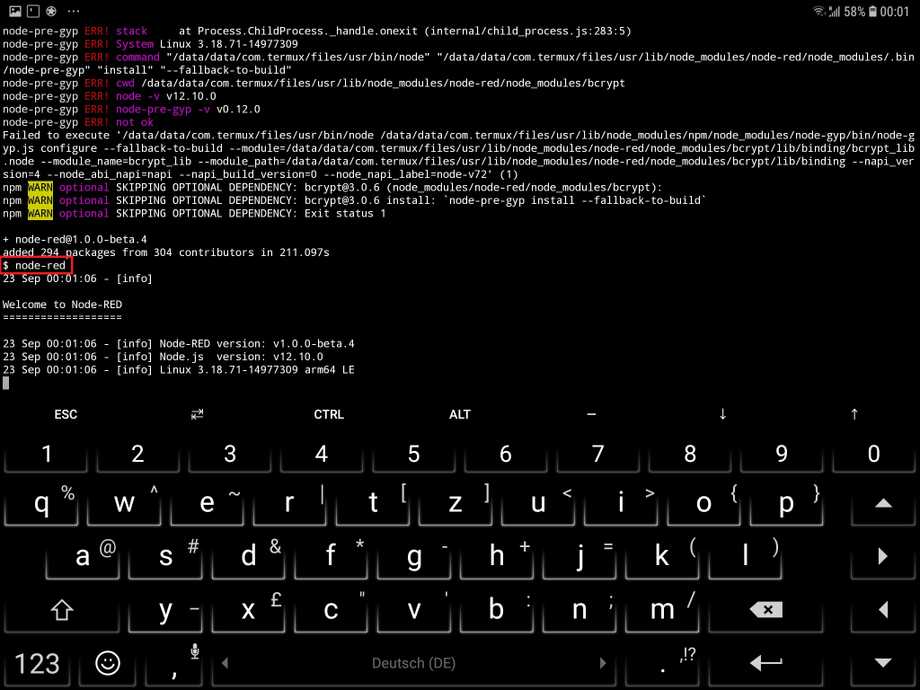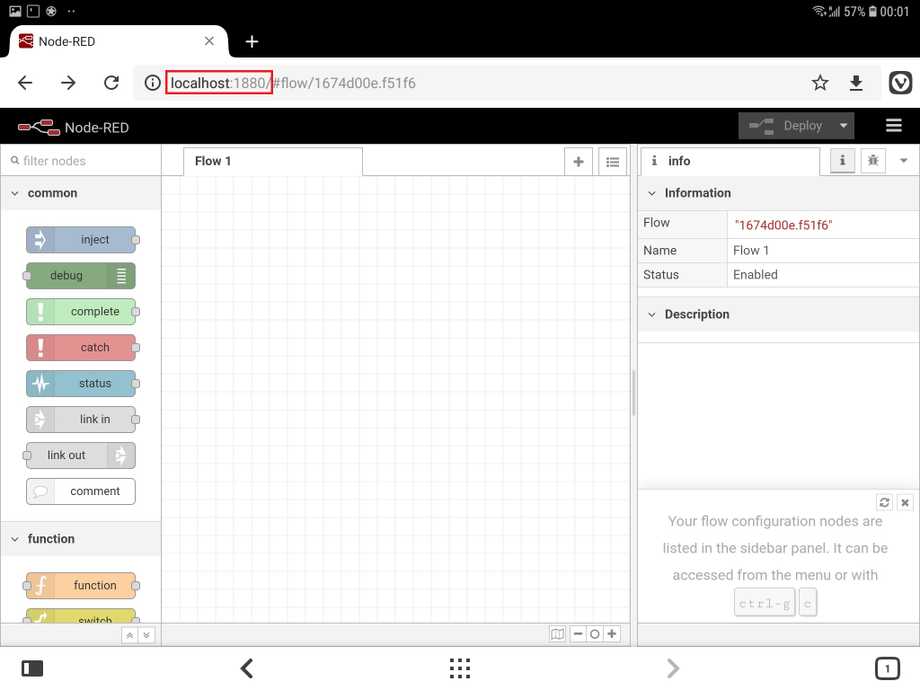Alle Node-RED Tutorials
- Alexa Voice Control w/o Cloud
- Node-RED Alarm Ereigniszeitstrahl
- Node-RED and IFTTT
- Node-RED and MQTT
- Node-RED and ONVIF
- Node-RED and Alarmserver Queries
- Node-RED and the INSTAR Cloud Webhook
- Node-RED and SQL-Logging
- Node-RED Dashboard Live Video
- Node-RED in Docker
- Node-RED unter Android
- INSTAR MQTT - Node-RED
All Node-RED FAQs
Node-RED on Android
We already published a couple of articles showing you how to interact with your INSTAR HD or Full HD camera using Node-RED:
- Node-RED on Debian Linux
- Node-RED and MQTT
- Node-RED and SQL logging
- Node-RED and the INSTAR MQTT Server
Make your camera the heart of your smart home
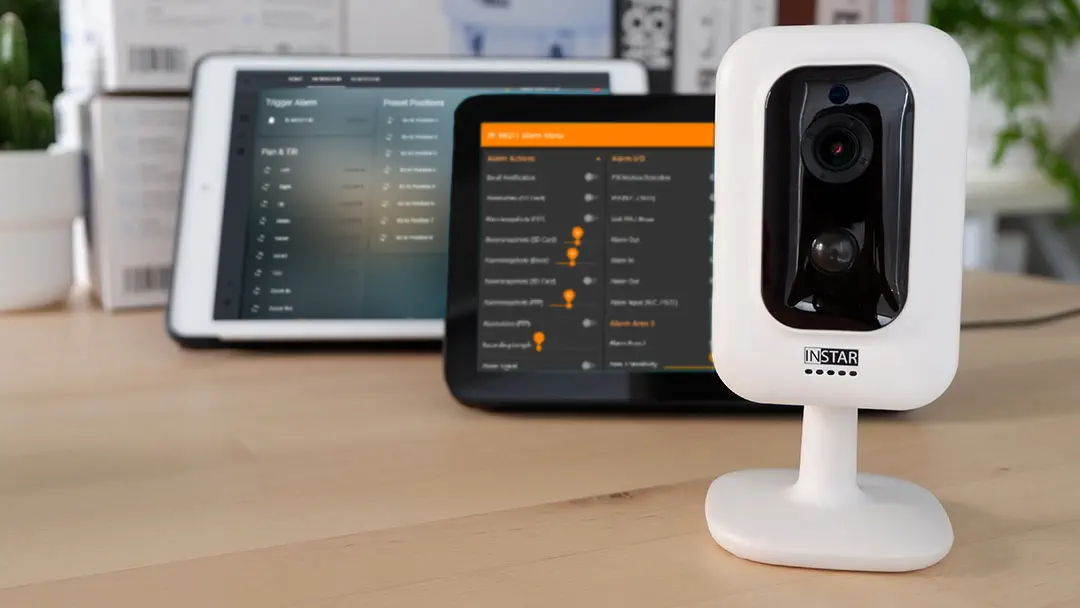
Using the MQTT interface of your INSTAR Full HD cameras you can connect them to an existing smarthome system (Home Assistant, OpenHAB, Node-RED, Athom Homey, Homematic, ioBroker, Loxone, homee) can be added. Or even make it the main broker for your MQTT sensors. MQTT allows you to automate ALL functions of your camera and link them to other services in your smarthome.
Control your camera via the IFTTT online service
On the IFTTT platform, we provided a service called INSTAR. The INSTAR applets provide you with the ability to control some settings of your INSTAR camera or INSTAR Cloud with IFTTT. You can connect INSTAR with triggers for location (Geo Location) and date & time, send notifications and much more. For example, you can connect INSTAR applets to the IFTTT location service and automatically disable the alarm when you arrive home. You can also use the INSTAR applets to create your own automation and connect them to other third-party applets.
Termux now allows you to install Node-RED directly on your Android phone or tablet - turning it into the a powerful smarthome gateway.
Start by installing Termux on your Android device and start the app. Make sure that everything is up-to-date by running apt update && apt upgrade.
Node-RED runs in Node.js which we can now install on our Android device by running the following command: apt install coreutils nano nodejs.
Now with Node.js in place we can install Node-RED with the following command: npm install -g --unsafe-perm node-red.
You can start up Node-RED by typing node-red.
Now start your default Android web browser and open http://localhost:1880 to access the Node-RED interface.
